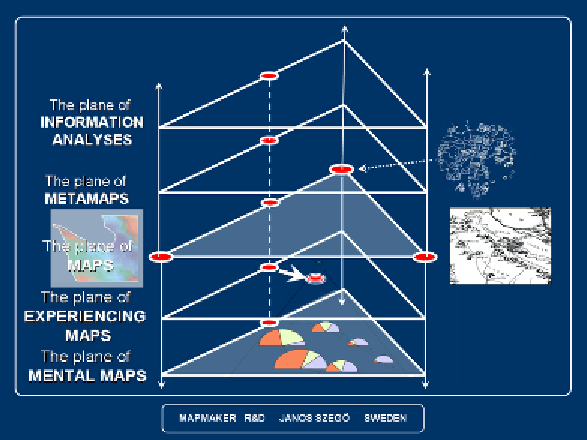Geoscience Reference
In-Depth Information
visual-, abstracted- and imaginary elements. These three elements com-
prise both the outside world - e.g. experiencing landscapes through direct
visual observations - and indirect experiences - e.g. visual experiences
through studying maps, atlases and other descriptions of the world.
This (very) hypothetical person in his early childhood builds up his mental
image by direct, emotionally coloured impressions. The direct, visual im-
pressions supposed here to merge into these emotional experiences. The
early visual and abstract components grow however and later the visual
and not least the abstract components grow most intensely. At the high
point of life the abstract knowledge is (supposed to) dominate but the emo-
tional components are gaining weight again. The aging person looses some
of his factual memories but the emotional components become more and
more predominant - the returning and through experiences of a lifetime
enriched memories weight more and more in his mind.
Figure 9:
Classification of maps by contents leads in two different directions: the analytical
(upwards) and the synthetic ones.
This is of course a very crude example of a possible development, just to
illustrate a possible visualisation of the process. Different personalities
have certainly different trajectories through the triangle-surface and differ-
ent composition of their mental maps.
whole scheme in 3D.

